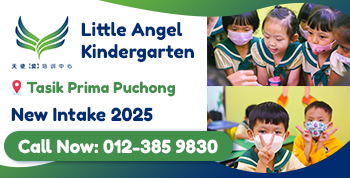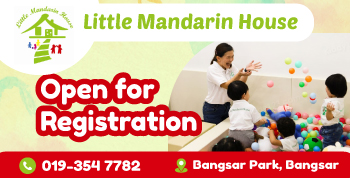Interview – Odyssey, The Global Preschool
by on 02/08/2025 ...
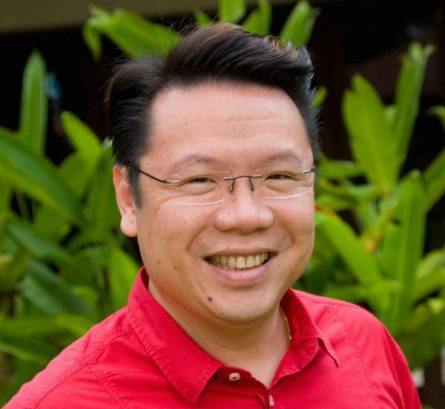
In 2014, Malaysia became the second country to have an Odyssey, The Global Preschool campus. The Odyssey journey began way back in 1999, when its team witnessed an amazing exhibit entitled ‘The Hundred Languages of Children’ in San Francisco. This world-renowned exhibit showcased a myriad of children’s ideas, interpreted and documented by educators from the preschool centres of Reggio Emilia, a small city in Northern Italy. Kiddy123 recently interviewed Odyssey’s Programme Specialist, Patrick Terence Lim, to learn more about the Reggio Emilia approach.
We understand that Odyssey, The Global Preschool’s early childhood education programme was inspired by the preschool centres of Reggio Emilia, a city in Italy. What main features in their approach made you decide to adopt it for children in Malaysia?
Odyssey the Global Preschool was born from the inspiration of Reggio Emilia back in 1998 when our CEO visited a
travelling exhibition in Berkley, California called ‘The Hundred Languages of Children’. She was inspired by how the voices of the children stood out through the works of the children’s hands and the way the teachers captured the pure essence of the children’s words. The way these teachers highlighted the children’s views, perspectives, opinions, imaginations and creativity was truly inspiring. This was the seed that was planted then and was just waiting to germinate.
In 2006, a steering committee was formed in Singapore to establish the dream school where children took charge of their learning, where they have a say in what they wanted to learn and where they are expected to be creative and innovative as they innately are. In 2007, the team made a trip to Reggio Emilia in Northern Italy for a study trip. The trip truly inspired them and they returned with empowered fervour to make this dream school come true in Singapore.
In 2008, the Odyssey opened its doors to the first cohort of children. The children had the right environment to explore and grow; they had the best-in-class educators to facilitate their learning; they had the best curriculum pedagogy to realise their greatest potential and they had the abundance of materials and resources to take their learning to the next level.
The children that had graduated from the Odyssey had moved on to some of the best schools in Singapore and have performed extremely well, in not just the creative extra-curricular activities in their primary and secondary schools, like music and netball, but they have produced excellent academic results, especially in Mathematics, Science and languages.
After 6 years of successfully implementing and running the Odyssey in Singapore, we felt it was time that we spread our wings and share this successful pedagogy with countries outside of Singapore. We felt that Malaysia, being a progressive country and the closest neighbour to Singapore, would be the best choice.
We believe that the formula that has been successful in Singapore can also be beneficial in Malaysia and elsewhere. Here are some main features:
Best-in-Class Educators
In every classroom in the Odyssey, there are at least two teachers. The Curriculum Specialist who plays the role of a Head Teacher, holds a Bachelor’s degree in either Early Childhood Education or Child Psychology. The educators in the Odyssey go through an extensive on boarding training programme, curriculum workshops, as well as, classroom attachments in Singapore. Each Curriculum Specialist has a mentor from Singapore that helps to support curriculum planning, implementation and reflection.
Chinese Immersion Programme
Each Odyssey class has a designated Chinese Language teacher who will speak to the children only in Chinese. The children will learn to speak the language not just from the lessons conducted in class but from the daily interactions with the Chinese Language teacher. This Chinese Immersion Programme has proven to be effective. The children are able to code-switch between the two languages and sometimes three languages depending on the country of origin they come from.
Specialist Teachers
Every children is uniquely different and they each express themselves in a myriad of ways. In the Odyssey, we provide many avenues for the children to do just that. The Odyssey is likely the only preschool in Malaysia that has a designated full time Art Specialist and a Music Specialist on board the teaching team. These specialists are qualified experts in their respective areas. They design lessons for children based on a developmentally appropriate framework to enhance the children creative expressions.
How would you compare the Reggio Emilia approach with the better known models in Malaysia, such as Montessori?
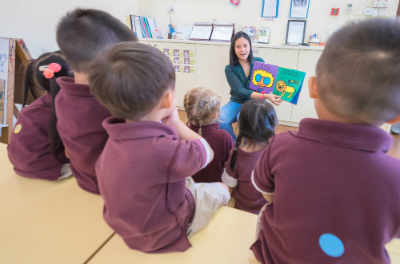
Every approach has its own unique way of implementing their curriculum and to assess the children’s learning. The Reggio Emilia approach is an inquiry-based project approach. The children are involved in real world projects that are experiential and exploratory. At the start of the project, the children go through an inquiry process of provocation. This stage will determine the direction of the project and the activities that the children will be engaged in. Throughout the process of the 6- to 10-week long project, the children will explore, discover, research, investigate, question, test, interview, reflect and take action. The educators in the class will facilitate the children’s learning by observing, questioning, recording, assessing and consolidating all that the children have learnt. These will be documented and creatively displayed in the classroom. At the end of the project period, the parents will be invited to a project culmination event and the children will showcase what they had discovered and learnt. This approach had been hugely accepted by the parents who appreciate the holistic development of the children. They get to see the children in action while enjoying the learning process. The success of the children’s learning is not based on the marks they get from an exam or worksheet but by the way the children confidently speak about their learning and the works they had produced through their hands, minds and hearts.
In your opinion, what is unique about Odyssey’s curriculum and your teaching and learning strategies?
The Odyssey’s curriculum and strategies encourages the children to take the responsibility to learn for themselves and the motivation to learn alongside peers in their classroom. The nature of the Odyssey’s curriculum is that the children do not just acquire knowledge to just remember and understand like most tests and exams promote. The curriculum encourages and nurtures the children to apply what they had learned to a higher level of thinking by analysing, evaluating and creating (Bloom’s Taxonomy). Therefore, educators in the Odyssey help to facilitate the children’s learning and to scaffold them to reach these levels of thinking and learning.
In what ways would the Malaysian child benefit from these unique features?
All children in the world have the same potential to learn, explore and discover their world regardless of which country they come from. The Malaysian child, like any child, has the innate curiosities, creativity and ability to succeed as long as they are given the opportunities to be immersed in an environment that promotes and believes that children are capable and competent. Thus, the Odyssey would be beneficial to all children anywhere in the world.
What programmes are currently available at your Penang and Kuala Lumpur campuses and what age groups are they tailored for?
Odyssey Malaysia provides preschool programmes at our campuses in MacAlister (Penang) and Setia Eco Park (Selangor) for children from 18 months to 6 years. The three programmes that the parents may choose to enrol their children are the Full-Day (8.30 AM to 6 PM), Half-Day (8.30 AM to 1 PM) and Extended-Day (8.30 AM to 3 PM) programmes. Each of these programmes includes the Music Odyssey, Art Odyssey, the Inquiry-Based Projects, Chinese Immersion Programme and the Creative Curriculum. The classes are as follows:
 Toddler class – 18 months to 2½ years old
Toddler class – 18 months to 2½ years old
Nursery 1 – 3 years
Nursery 2 – 4 years
Kindy 1 – 5 years
Kindy 2 – 6 years
The Odyssey programme prepares children for both the international school and public school academic requirements. Extensive study has been done to ensure that these are aligned with the national educational framework in Singapore and Malaysia.
We see that Odyssey emphasises on a campus environment that is optimal for stimulation and learning. What are the main features and facilities in your campuses?
The Odyssey provides the best resources and materials that the children need to expand their learning in all areas of development. It is integral for children to have ample space, experiences, materials, resources and time to develop at their own pace.
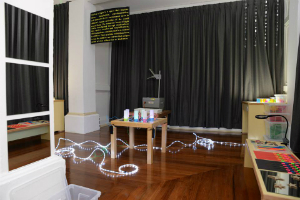
In each Odyssey campus, you will find specialist classrooms. Firstly, the Atelier, which is the art studio, headed by the Art Specialist is a space where the children’s creative energy will flourish. The Atelier is furnished with materials that would encourage the children to create beautiful artworks. These materials include clay, wood, acrylic paints, charcoal, etc.
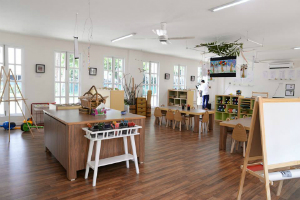
The Music Room is also another feature that promotes the children’s creative expressions. This feature is a space where the children will explore movements in dance and the elements of music through the multitude of percussion instruments.
Each campus has a Piazza. The Piazza is a mixed-level area where the children can play … just like a huge playroom. They may engage themselves in playing with blocks, figurines, puzzles, the home corner and grocery store. It is a space where play is open and imaginative which entails loads of role-playing, problem-solving and peer interaction. Primarily, the Piazza is a place where parents, children and teachers meet in the morning and at pick up time. It is a place where people meet.
Are there any thoughts you wish to share with parents in Malaysia?
Children are precious. How they learn, what they want in life and the kind of character they will have are largely determined by their experiences in the first six years of their lives. The attitudes, mannerisms and attributes are formed during this period by the learning environment that they are in, the nurturing that they receive by their caregivers and the way they learn these things. Children are not result generators nor are they a means to compare scores with other people’s children; each child is unique with their own potential and their own competencies. Let them grow into the people they want to be and not the people you want them to be. All children are capable of great things if only they are given the space and time to do that. J.R.R. Tolkien, author of Lord of the Rings, aptly wrote, ‘Even the smallest person can change the course of the future.’ Your children can, only if you let them.







